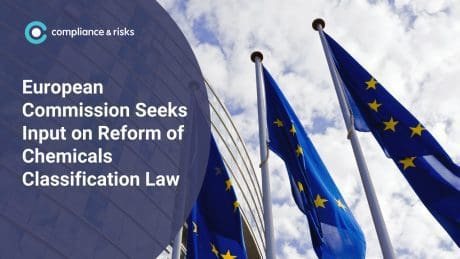
EU: More Information on the Uses of the 10 SVHCs Added to Candidate List

 The European Chemicals Agency (ECHA) announced on 27th June 2018 that ten more Substances of Very High Concern (SVHC) were added to the Candidate List as announced on C2P. The substance with the biggest impact will probably be lead (see Chris Robertson’s article) but most of the other nine have important industrial uses. ECHA’s news article 1 lists the commoner uses of the ten substances. Below are some additional information on uses and possible implications.
The European Chemicals Agency (ECHA) announced on 27th June 2018 that ten more Substances of Very High Concern (SVHC) were added to the Candidate List as announced on C2P. The substance with the biggest impact will probably be lead (see Chris Robertson’s article) but most of the other nine have important industrial uses. ECHA’s news article 1 lists the commoner uses of the ten substances. Below are some additional information on uses and possible implications.
Octamethylcyclotetrasiloxane (D4), Decamethylcyclopentasiloxane (D5) and Dodecamethylcyclohexasiloxane (D6) – These substances are used as chemical intermediates for the production of silicone rubbers, gels and resins. Silicone polymers and resins do not contain these substances at >0.1% and so Article 33 disclosure is not necessary, but the main impact of including these substances in the Candidate List will be to encourage suppliers to withdraw chemical products such as sealants that contain these substances from the EU market and this will affect many industries that use them. Silicones are used in electronics, aerospace, automotive, construction and many other industries. If these are added to Annex XIV in the future and so require authorization for use, this would have serious implications for many EU manufacturers.
Lead metal – This is remarkably common as it is present at >0.1% in machine-able alloy parts, solders and in lead-acid batteries and so will require Article 33 disclosure for many types of product. Article 33 disclosure has applied since 28th June and so suppliers who are aware that they rely on a RoHS exemption for lead in high melting point solders or a machine-able alloy are obliged to inform customers immediately as there is no transition period.
Disodium octaborate – This substance is added to the growing list of “sodium borates” that are already SVHCs.
Benzo[ghi]perylene – This substance is yet another polycyclic aromatic hydrocarbon (PAH) added to the Candidate List. This substance is not intentionally manufactured and occurs only as an unintended impurity in polymers and rubbers nearly always at <0.1%.
Terphenyl hydrogenated – This occurs in finished products as an additive in tapes, electrical insulating coating compounds, epoxy resins and coatings, polyurethane potting and moulding compounds, and electric cables. It is also used in polysulphide sealants and as a plasticizer, such as in high voltage power cables and as in aircraft sealants. It is also used as a heat transfer fluid in industrial processes and, although it does not occur in the finished products, if this substance were to be added to Annex XIV many industry sectors would be affected. Substitution is reported to be sometimes possible (although with inferior efficiency) but this may be too costly in terms of plant redesign. However it is also claimed that some alternative heat transfer fluids are less well studied and so have lesser hazard classifications, but may be, in reality, equally or more hazardous.
Ethylenediamine (EDA) – Used as an intermediate to manufacture other chemicals and also to manufacture articles. It is used as it is an ingredient in adhesives, sealants, coatings, etc. but it does not occur in articles.
Benzene-1,2,4-tricarboxylic acid 1,2 anhydride (trimellitic anhydride) (TMA) – This is the fourth anhydride to be classified as an SVHC. These anhydrides are used as hardeners for epoxy and other types of resins and adhesive. Alternative types of hardener are used (such as amines), but these usually give different properties to the cured resins and so replacement of anhydride hardeners would be difficult if products that contain these are no longer sold in the EU.
Dicyclohexyl phthalate (DCHP) – Used as a plasticizer and as a light stabilizer in a wide range of polymers including PVC, also in resins, paints, lacquers and varnishes as well as to provide water-resistance in inks. It will occur in articles if used.
All of the above ten substances have been added to the Candidate List because they meet the criteria of Article 57 of the REACH Regulation. Whether they cause harm to health or the environment and the impact on EU industry have not been considered. However classification as SVHCs has serious implications for industry as obsolescence of materials commonly occurs, even though inclusion in the Candidate List is not a restriction. Implications will be more serious if substances are added to Annex XIV as this prevents their use as chemicals in the EU, unless authorization is granted. The EU does not automatically add all SVHCs to Annex XIV, but this is a strong possibility.
If you would like to find out how you can stay on top of regulatory issues related to EU REACH, sign up to our newsletter today!








